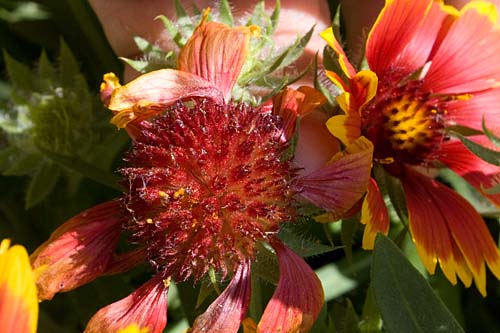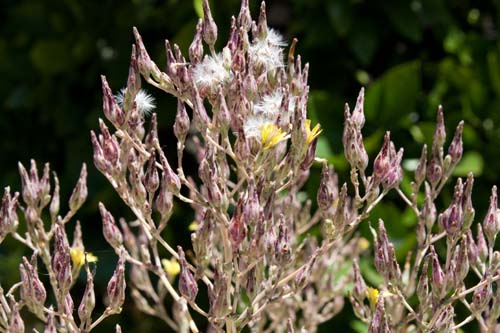You probably know someone like this: Through their young adulthood, through the prime dating years, they hit the gym hard, run, watch what they eat, and pay close attention to styles so that they were always immaculately dressed. But then they eventually meet a mate and settle down. As life’s other priorities take over, the former jock or swimwear model puts on a few midriff pounds and stops being interested in how they look to potential suitors.
That’s the same phenomenon that happens with a lot of flowering plants in the garden. Once they reach maturity, they go crazy putting out flowers to charm pollinators. But before long, the plants have literally gone to seen and start looking scrappy.
These are probably plants that you invited into your garden because of their flowers, not because of their ability to set seed. With many annuals, shrubs and perennials removing the spent flowers–deadheading– is a reliable way to extend the blooming period and keep the plants tidy.

Here’s a plant of the perennial blanket flower, Gaillardia pulchella, that I’ve been deadheading regularly for the last two months. Left to its own devices it would set seed and bloom a lot less or not at all. The process isn’t difficult and can be a relaxing way to spend a few minutes in the garden, clippers in one hand and a refreshing beverage in the other.
Of course one of the most satisfying forms of deadheading is to cut flowers with a bit of stem to bring inside and enjoy in a vase!
 Of these two flowers, the one on the left is ready to be removed.
Of these two flowers, the one on the left is ready to be removed.
 A week’s worth of spent flowers, ready for the recycling or compost.
A week’s worth of spent flowers, ready for the recycling or compost.
Here are some basic deadheading guidelines for a few other kinds of plants:
Many annuals (marigolds, calendulas, cosmos, zinnias, geraniums, pansies, petunias): You can pinch off the old flower on most of these, or you can also use a sharp pair of pruners. Fortunately many annuals are bred to be low maintenance, so they can look great for a long time even without the extra work. But a little attention can keep them looking nicer, longer.
Plants with tall stalks of flowers (snapdragons, floxgloves, penstemons, some sages): Wait until the stem has finished blooming or has just a couple of ragged flowers. Cut the entire stalk below where the lowest flower formed, and above a stem node.
Roses (most modern hybrids): Cut the stems to just above a node where you see five leaves emerging. Cutting higher may give you a few more flowers, but they’ll likely be smaller and on weaker stems.
Bulbs: Cut the flowering stem once the blooms have faded, making the cut towards the base of the plant. Even though bulbs generally won’t rebloom the same season after deadheading, cutting off the developing seed heads will allow the leaves to recharge the bulb for next year’s flowering instead of producing seed.



 Of these two flowers, the one on the left is ready to be removed.
Of these two flowers, the one on the left is ready to be removed. A week’s worth of spent flowers, ready for the recycling or compost.
A week’s worth of spent flowers, ready for the recycling or compost.